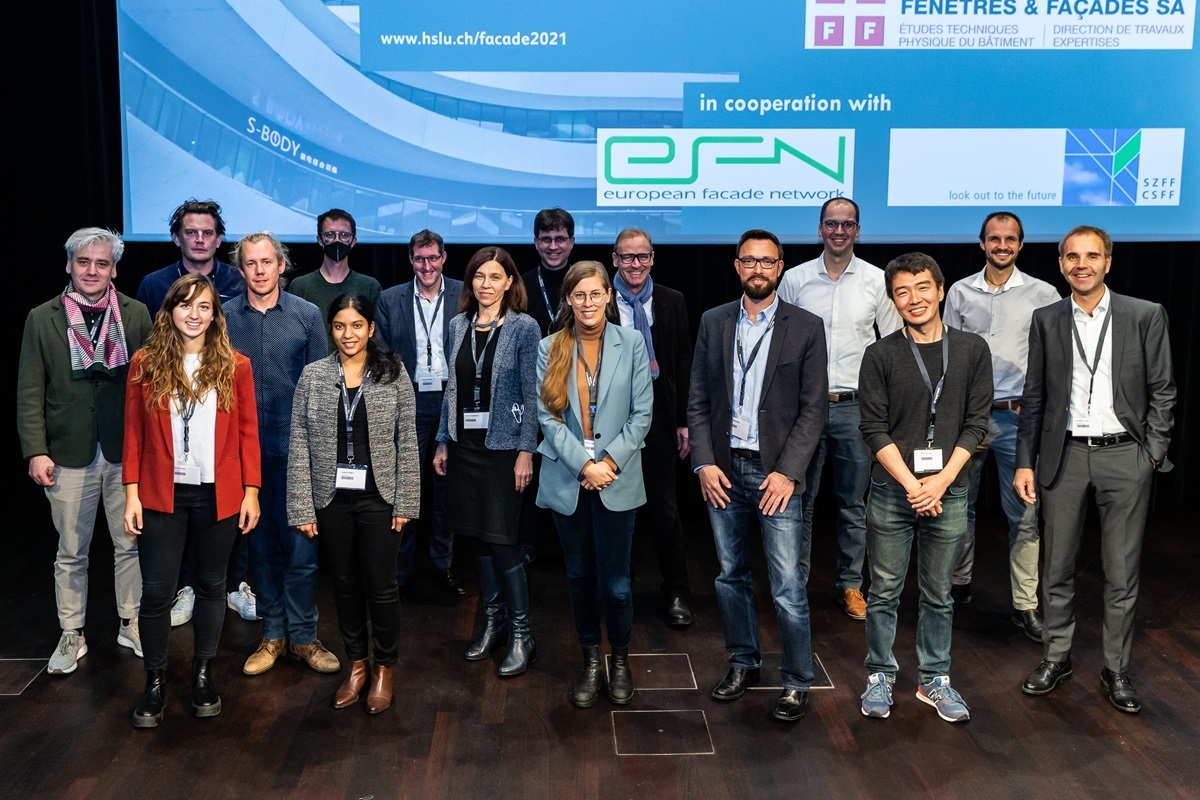24.10.2022
“Facades are the face of the building”
Valeria Piccioni is a PhD student in the Department of Architecture and Building Systems at ITA within the NCCR DFAB. Her doctoral research focuses on performance integration in 3D-printed facades. Together with researchers, she is looking for alternatives to conventional components in architecture. Valeria lived in Milan where she studied Architecture at Politecnico di Milano. She then moved to TU Delft, where she completed her Master of Science in Building Technology and worked in industry.
Valeria, what is your research about?
The idea is to explore whether it is possible to 3D print a performant and sustainable building façade using just one material, plastic. In my research team, we look into the fundamental aspects of this, which is the interplay of performance, manufacturing and geometry for the design of integrated functions within these components. We are working on the topic from different angles, and my focus is to understand howwe can create functional, highly-performant components that can contribute to the decarbonization of the building sector.

Where did the interest in digitally fabricated facades came from?
Facades are a good combination of architectural and engineering thinking. Combined with the new world of digital fabrication and the opportunities it offers, it's an exciting field for me to work on. A very important part of my master studies was the use of computational methods for finding new approaches to design the next-generation building components. Facades are an interesting topic because they are very architectural, they are the face of the building to the people and the environment, but also very technical because they have to perform many tasks. They really affect the emissions and energy use from buildings and need provide people with a comfortable environment, from a thermal, structural and visual point of view. There is room for great improvement in building facades, and digital fabrication can offer solutions for that.
Women are underrepresented in technical (research) fields. How does this affect you?
When I turned to the more technical side of architecture, I got used to the fact that the ratio between men and women was getting larger. In a way, I got used to it. At least from what I've seen, the construction industry is more male dominated than academia. Maybe now that I've worked in the industry, I'm just relieved to see that there are more women in the academia. The number of women at ITA, and also in my chair, is slowly growing. In the NCCR, I don't feel that women are in the minority in DFAB.
You are a NCCR DFAB member. How do you and your research profit from this network?
I enjoy being part of a team. I've always played volleyball. I think the idea of teamwork and that everyone has a role and a specific task but is part of a larger whole is a good way to get the best out of people. It works in sports just as it does in research - at least so far for me.


The people in my research team come together for communal objective. We are all working on this topic independently, but we need each other to incorporate what we find out into the overall idea of the project. Everyone has their own expertise and research interest, but if we all combine our findings, we can show the real potential of this technology. The benefit is that someone coming from a different background or expertise can open up your perspective. And that's genuinely helpful for research, that’s how new ideas develop. In making, especially when you're working on prototypes or large pieces that you want to showcase, it's nice to work with other people and have that collaborative effort.
What do you advise to people who are interested in your research field? (But have not started a career yet)
For me, a PhD was never really part of a plan made in advance. I thought that I would get a job and start working after my studies. But I soon realized I missed the part where you learn something every day and have the freedom to push innovation. After working for a few months, I realized that I really wanted to get back to that feeling, and that stimulating environment. That's how I applied for the PhD. The PhD is an opportunity to take what your knowledge to the next level. You have the freedom to research things that you are interested in, and that can make a positive impact in the world. That's very valuable.
What do you wish for your research field in the future?
Especially in this area of digitally fabricated components, the construction industry is quite slow to transform and change. But in the last 8 years ETH and this institute have shown, for the first time, that things are possible on a large scale. This is an eye-opener for people working in the industry. In our research, which is specifically on façades and 3D-printed polymer façades, I would like us to use our prototypes and our findings to convince people in the industry that these new technologies are possible, that there is a potential application for them, and that we should continue to do research. We should not only think about how cool and innovative things can be, but also how we can have a meaningful impact on society, and can benefit the construction industry and the building sector.
This portrait is inspired by the #NCCRWoman campaign, which introduces you to another woman working in research at a Swiss National Centre of Competence in Research. In the next portrait you will get to know Seyma Gürel Saydam.


